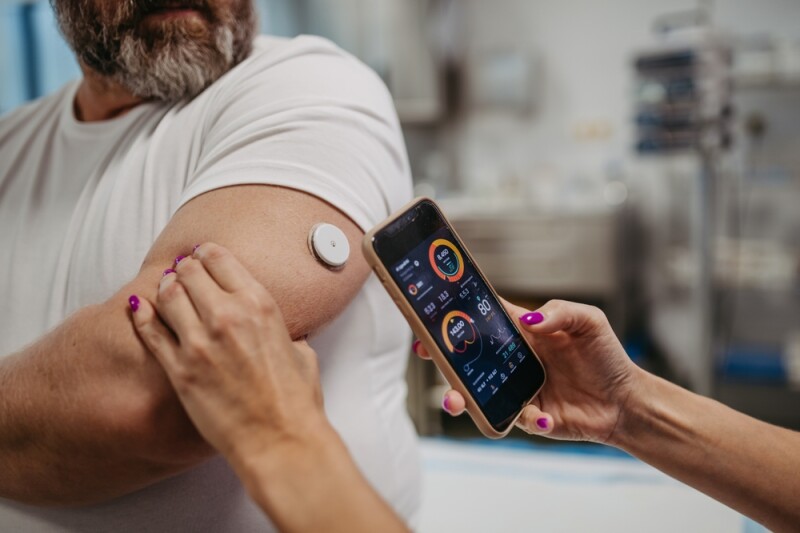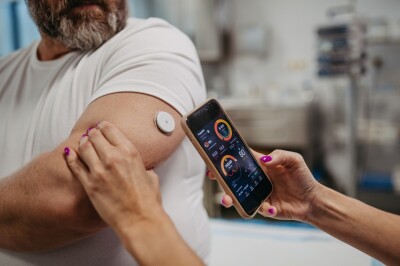Be smarter with data to achieve better patient outcomes
March 2, 2017
 There are many different ways to use data to make high-value, real-time decisions in the clinical environment, according to Peter D'Adamo, ND, a naturopathic physician, author, and software engineer, who spoke at the Integrative Healthcare Symposium in New York City last week. Practitioners have the capability to use data to understand complicated interactions and relationships. "There's a paradigmatic shift that technology can give practitioners that allows them to get a better grip on complex situations," said D'Adamo. Providers often talk about relationships, but few use them in the clinical setting, says D'Adamo. However, with enough technology, good data, and imaginative programming, practitioners can develop an approach to the patient based on the best available information, allowing them to arrive at precise conclusions that are cost-effective—biome and genetic analyses, for example, are relatively inexpensive and give the raw data that practitioners can then apply to existing medical data, and create a profile unique to the client, he said. The volume of data sources available has skyrocketed in recent years. Gone are the days of in-person cumulative index medicos and pay-by-the-minute Medline. Today's practitioners can access research and data from dozens of online resources at their fingertips, from single-nucleotide polymorphisms (SNPs) to genetics to pharm-genomics. "These are all readily available and can be, under appropriate situations, integrated in such a way so that they become part of a working environment that allows a clinical to drill down in a reasonable amount of time with enough skill and experience to curate a report for the patient that will be highly specific, usable, and therapeutically intense," said D'Adamo. No single practitioner can parse through the large amount of data out there. To address this, D'Adamo developed Opus23, software that consolidates the data and gives providers an easy-to-use resource. There are 37,000 genes in a human being. Most practitioners aren't going to know everything about each gene, let alone the symbol, protein, or interactions associated with it. The software is designed to give practitioners access to any information known about the gene, allowing them to pull up the gene expression, association with diseases, and natural products associated with expression or control of the gene. Providers can use the information to tailor treatment and resultantly achieve better patient outcomes. While genes can help practitioners determine treatment and prevention protocols for patients, the sample principles can also be applied to the microbiome. Opus23 also features a microbiome module, Utopia, that integrates a patient's microbiome data with genomic data, which presented a host of new challenges, said D'Adamo. "Bacetria don't play as nice as genes do," he said. "The number of some bacteria vary significantly from person to person, and normal ranges are different for everyone, so we often can't accomplish certain things with bacteria that we wish we could." Nonetheless, data can show how bacteria interacts—an "interaction web" in the software showing microbial data and genomic data providers can manage so they know which genes, for example, might make a person more prone to inflammatory responses. The clinician can then increase production of certain bacteria by fortifying other bacteria that supports what they want to enhance, or inhibit bacteria that they don't want to interfere. "You're gardening in this case," said D'Adamo. "You're actually selectively bio-engineering and gardening to create a better outcome for your patient."
There are many different ways to use data to make high-value, real-time decisions in the clinical environment, according to Peter D'Adamo, ND, a naturopathic physician, author, and software engineer, who spoke at the Integrative Healthcare Symposium in New York City last week. Practitioners have the capability to use data to understand complicated interactions and relationships. "There's a paradigmatic shift that technology can give practitioners that allows them to get a better grip on complex situations," said D'Adamo. Providers often talk about relationships, but few use them in the clinical setting, says D'Adamo. However, with enough technology, good data, and imaginative programming, practitioners can develop an approach to the patient based on the best available information, allowing them to arrive at precise conclusions that are cost-effective—biome and genetic analyses, for example, are relatively inexpensive and give the raw data that practitioners can then apply to existing medical data, and create a profile unique to the client, he said. The volume of data sources available has skyrocketed in recent years. Gone are the days of in-person cumulative index medicos and pay-by-the-minute Medline. Today's practitioners can access research and data from dozens of online resources at their fingertips, from single-nucleotide polymorphisms (SNPs) to genetics to pharm-genomics. "These are all readily available and can be, under appropriate situations, integrated in such a way so that they become part of a working environment that allows a clinical to drill down in a reasonable amount of time with enough skill and experience to curate a report for the patient that will be highly specific, usable, and therapeutically intense," said D'Adamo. No single practitioner can parse through the large amount of data out there. To address this, D'Adamo developed Opus23, software that consolidates the data and gives providers an easy-to-use resource. There are 37,000 genes in a human being. Most practitioners aren't going to know everything about each gene, let alone the symbol, protein, or interactions associated with it. The software is designed to give practitioners access to any information known about the gene, allowing them to pull up the gene expression, association with diseases, and natural products associated with expression or control of the gene. Providers can use the information to tailor treatment and resultantly achieve better patient outcomes. While genes can help practitioners determine treatment and prevention protocols for patients, the sample principles can also be applied to the microbiome. Opus23 also features a microbiome module, Utopia, that integrates a patient's microbiome data with genomic data, which presented a host of new challenges, said D'Adamo. "Bacetria don't play as nice as genes do," he said. "The number of some bacteria vary significantly from person to person, and normal ranges are different for everyone, so we often can't accomplish certain things with bacteria that we wish we could." Nonetheless, data can show how bacteria interacts—an "interaction web" in the software showing microbial data and genomic data providers can manage so they know which genes, for example, might make a person more prone to inflammatory responses. The clinician can then increase production of certain bacteria by fortifying other bacteria that supports what they want to enhance, or inhibit bacteria that they don't want to interfere. "You're gardening in this case," said D'Adamo. "You're actually selectively bio-engineering and gardening to create a better outcome for your patient."



















SHARE